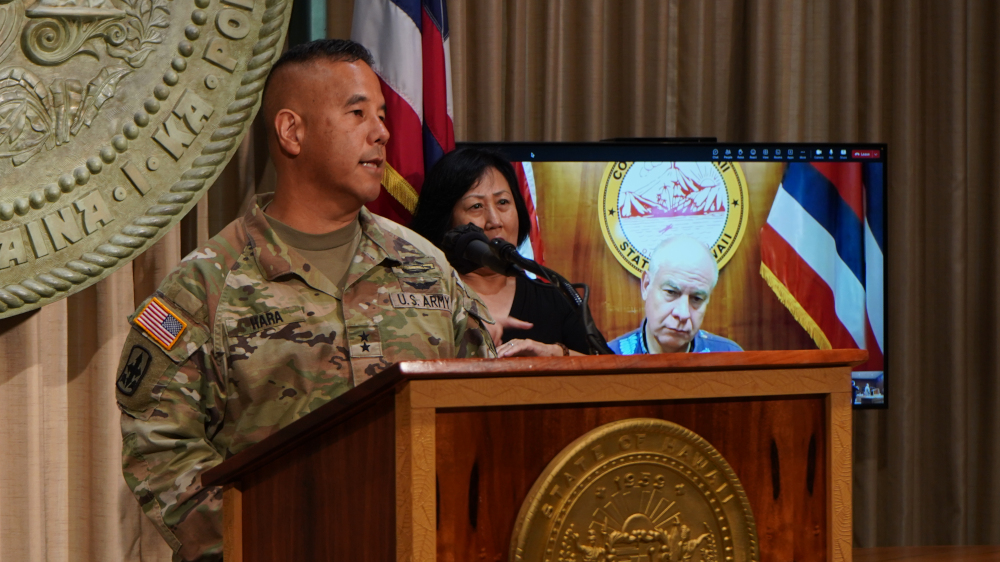(BIVN) – Tropical Storm Calvin passed to the south of Hawaiʻi island on Wednesday, bringing rain, wind, and only minor flooding to areas of the Big Island.
“Thankfully, Calvin did not cause significant damage, but it’s a reminder for us to be prepared,” Hawaiʻi Governor Josh Green said.
Green and joined officials to reflect on the government response to the Calvin, which they say “was just the first challenge in a hurricane season that lasts through November.”
From a news release by the State of Hawaiʻi:
The leading edge of Calvin struck Hawai‘i island late Tuesday with heavy rains and 50 mph winds and stronger gusts.
The storm originally was expected to pass over most of the major islands, but it gradually shifted to the south and mainly caused localized flooding and minor wind damage over the southeast portions of the Big Island. By midday Wednesday it was moving off to the west and winds had dropped below tropical storm strength, or 40 mph.
The Governor thanked the local, state, federal and private sector partners who worked together to prepare for the storm and respond to its impacts, from the U.S. military and the Federal Emergency Management Agency (FEMA) to the Hawai‘i Red Cross and its volunteers.
“This provided the whole community an opportunity to practice for the next potential emergency,” Governor Green said. “As a new administration, it was gratifying for us to see how well all the parts of our state’s response system were able to work together, because that’s what it will take when a more serious storm hits.”
Mayor Mitch Roth also praised the efforts of all the partners that took part in the emergency management effort, singling out the Hawai‘i County Civil Defense Agency, which worked days in advance and through the night to prepare for impacts and manage response efforts. “This has been a tremendous team effort,” he said.
The State Adjutant General, Major General Kenneth Hara, expressed his gratitude to leadership and members of the Hawaiʻi National Guard for preparations made in support of the islands. “Planning and preparing for our response was challenging because more than 1,700 soldiers, a few airmen, and their equipment from the Guard are currently deployed to Fort Johnson, Louisiana, participating in a Joint Readiness Training Center rotation,” but several alternatives were available, he said. The Guard members will return in mid-August.
“Everyone stepped up, got ready, and thank goodness we didn’t have to exercise any of those plans, but it was a good test,” said James Barros, Administrator of the Hawai‘i Emergency Management Agency (HI-EMA). “In the response phase (of an emergency), it’s going to be the whole of the community that gets us through,” Barros said.
Calvin is now a post-tropical cyclone, said John Bravender, NOAA Warning Coordination Meteorologist. “During the overnight hours this morning, lost all its deep thunderstorms that help define a tropical cyclone …We still have another 12 to 24 hours of strong winds,” Bravender said.
Hurricane season in Hawaiʻi is from June through November. The HI-EMA website offers a wealth of information on disaster preparedness.
Officials stress that all residents should be “2 Weeks Ready” for an emergency, “with a stockpile of water, food, medicine, and other necessary supplies that could last up to 14 days.”


by Big Island Video News7:19 am
on at
STORY SUMMARY
HONOLULU, Hawaiʻi - State leaders and emergency officials reflect on the first test of the 2023 Hurricane Season.